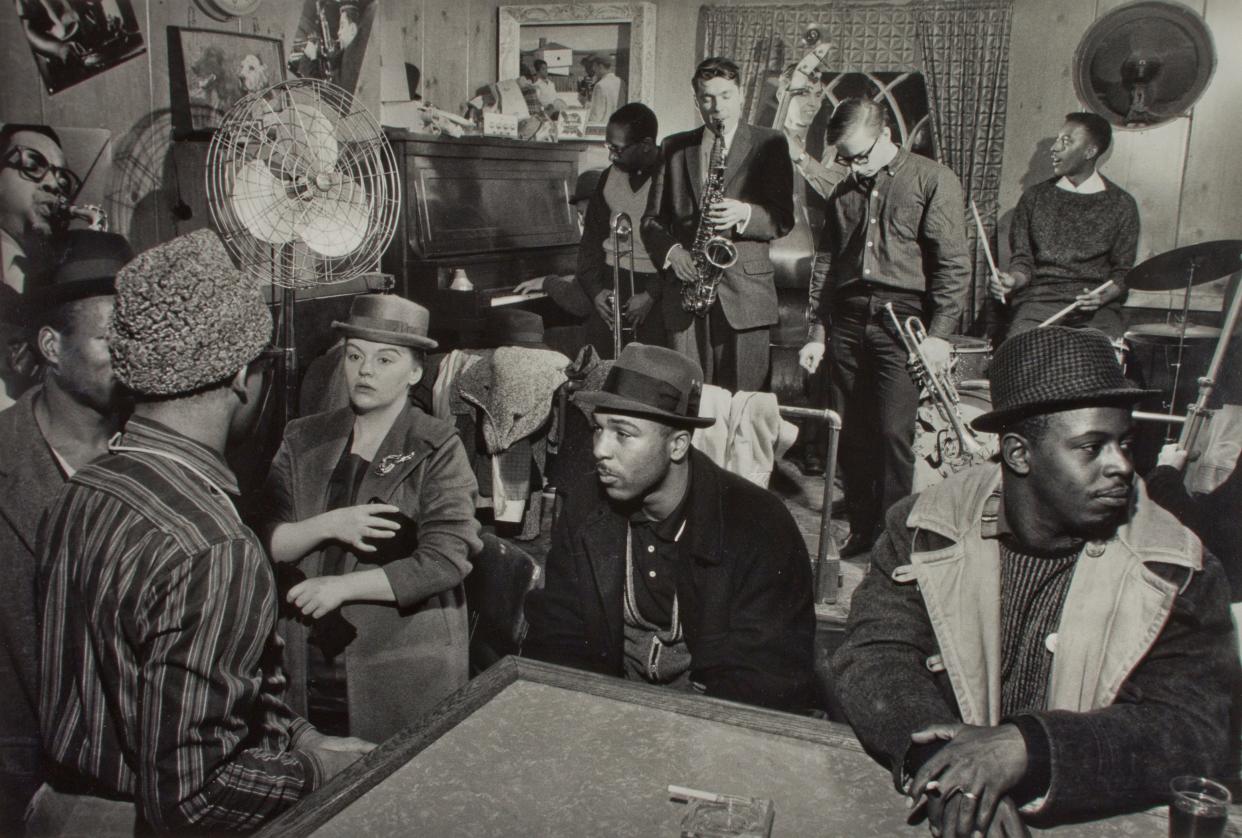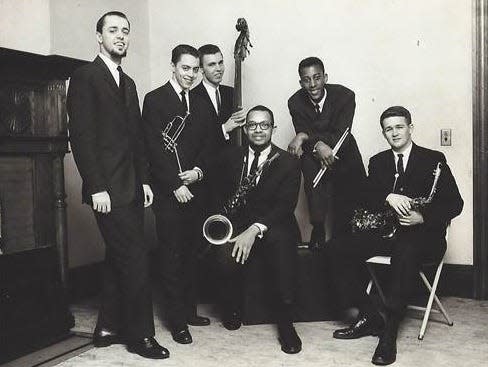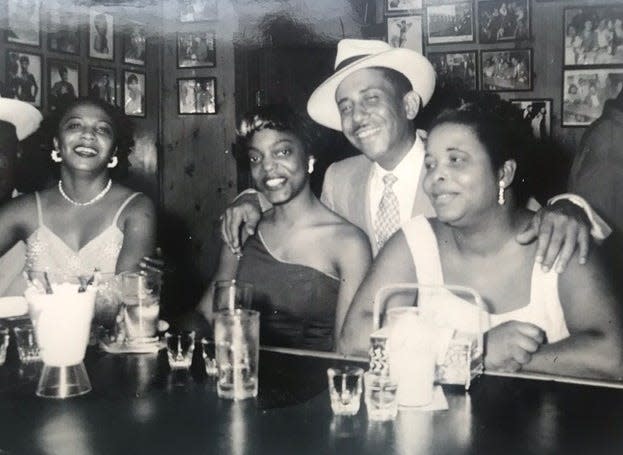'If you aren't moving ... you must be dead.' Story of Rochester's legendary jazz club
The Pythodd Room was a beloved jazz club in the Corn Hill neighborhood that attracted big-name musicians like Pee Wee Ellis, Ray Bryant and Wes Montgomery as well as aspiring local talent like the Mangione brothers.
The Clarissa Street club was a vibrant part of a thriving neighborhood, a stop on the "jazz circuit" with a scruffy façade and a bona fide bebop vibe. Crowds jammed elbow-to-elbow seemed to sway as one in harmonious jubilance, as described in a 1970 Upstate story.
"A lot of places in Rochester have music," wrote the author, Bill O'Brien. "A lot of places are almost in darkness while the bands play. People jiggle in drinking establishments all over town … But the Pythodd has its own kind of feeling. There's a ribs and chicken, soul, good time Charlie, hustle me baby, drink it down and shake-all-over atmosphere at the Pythodd."
The Pythodd apparently started in the 1950s at the corner of Clarissa and Troup streets. The unusual name was an amalgam of the Knights of Pythias and Odd Fellows clubs that had previously met in the building. The building itself was a large three-story house with peeling paint, sagging steps and a nothing-fancy look described as raggedy and "ready to be wrecked."
Rochester history Before Jazz Fest, this club regularly featured the greatest names in jazz music

What was Pythodd in Rochester NY?
Local jazz keyboardist Gap Mangione played the Pythodd regularly in the late 1960s and early 1970s and years earlier with his brother Chuck. He remembered the Pythodd as both a neighborhood meeting place and a jazz mecca.
"The Pythodd was kind of a corner joint, it kind of had two lives," said Mangione, who was inducted in 2015 to the Rochester Music Hall of Fame. "People would come there after church because it was their gathering spot. It had that kind of aura. You could see the best players you can imagine at the beginning of their careers."
George Benson, who has gone on to win 10 Grammy Awards, was among the young phenoms who came through the Pythodd, Mangione recalled. Jazz great Lionel Hampton once showed up unannounced and played.
The club was owned, at least for some of the time, by Stanley and Dolores Thomas. Their son Stanley Jr. ran the place. Black people and white people intermingled at the Pythodd, and judges and City Council members were regulars, Stanley Jr. said in a news interview, as were students from Rochester Institute of Technology when the campus was still downtown.

O'Brien's story in Upstate (a magazine that used to run in the Sunday Democrat and Chronicle) vividly described the groove inside the Pythodd.
"If you aren't moving, somebody should carry you. You must be dead," he wrote. "The tingle starts around the rib cage, moves up, down and around. Next thing, your whole body is kind of jiggling ever so slightly … The room. The people. They surround you. Then the music crawls inside."
In the Pythodd's back room, O'Brien wrote, tables and chairs were so close that "even the dead man would get the feeling from his neighbor's jiggle."
Tina Chapman DaCosta, a professor at RIT, made a short documentary of the Pythodd that premiered two years ago. She got the idea while pursuing a master's degree in film and script writing at RIT.

Her husband, José DaCosta, produced a local live jazz series called Exodus to Jazz. Conversations often led to almost-reverential talk of the Clarissa Street club with the funky name, and that intrigued Chapman DaCosta.
"People kept talking about this club, the Pythodd, like they were talking about a long-lost friend or family member," she remembered. "My question was what was so special about the Pythodd? And that took me on a journey. It started to come to life for me."
In the video — which can be accessed at https://vimeo.com/386568855 — Chapman DaCosta mixes interviews with Pythodd customers with sights and sounds from the place. One interviewee said, "The Pythodd was the joint!" and a cultural mix for everybody who loved music.
Chapman DaCosta said she learned why the place is so lovingly remembered.
"Because it was in the neighborhood, it was a jazz club in the neighborhood," she said. "It was integrated into the lives of the people who lived there. … You had a little bit of adventure and you had a wonderful mix of talent. That was the happening place."
By 1972, though, the Pythodd closed. Some said jazz music had fallen out of favor by then. Urban renewal, which felled many great old buildings, dealt the final blow to the Pythodd. The building was demolished and the site is now a parking lot.
The memories of the Pythodd are not so easily silenced. Someone inevitably brings up the Pythodd during the annual Clarissa Street Reunion set for Aug. 17, according to the City of Rochester.
More: 'I still cry': Powerful Rochester mural captures what was lost in anti-urban destruction
Morrell is a former Democrat and Chronicle reporter who is now a Rochester-based freelance writer.This story was originally published in July 2015 as part of the Whatever Happened To series.
This article originally appeared on Rochester Democrat and Chronicle: The Pythodd Room was a legendary Rochester jazz club on Clarissa St.
